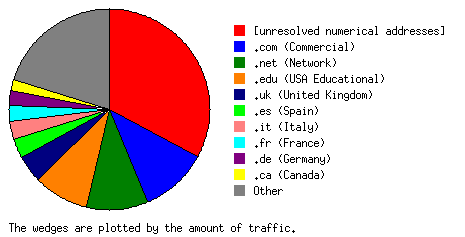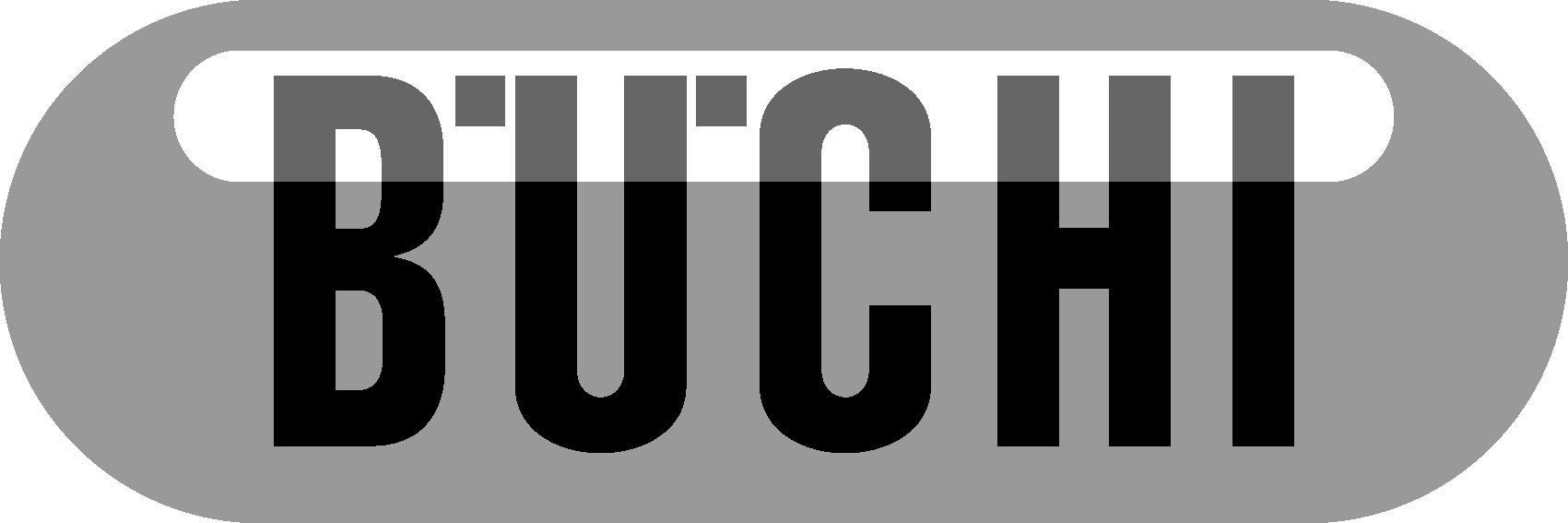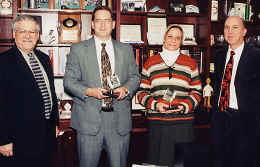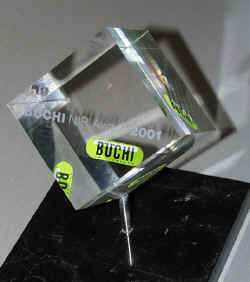IJVS Volume 6 Edition 2 - editorial
This is the last edition of IJVS to appear under the Perkin Elmer banner. At Easter 2002, P-E finish their sponsorshop, a contribution which I pointed out last time is and was unequally valuable. P-E have funded costs for the first 5 years of the Journal and all of us must be thankful. Could I please ask that ALL of you email a “thank you” to Dr. Dave Clarke at David.R.Clark [at] perkinelmer.com.
HOW SUCCESSFUL IS IJVS? There are currently 1600 ‘registered’ readers and many, many more casual ones. Recently, we used web analysis software to analyse the log files on the website. A full report is available on the stats page. Several points are very clear.
- A vast number of folks access the Journal every day
- For example, the following details were collated from analysed results from Tuesday 29th January 2002 to Tuesday 12th February 2002 (14 days). Figures in parentheses refer to the 7-day period ending 13th February 2002.
Successful requests for pages: 8,132 (2,843)
Average successful requests for pages: 542 (406)- Access and Readership is really international

So, there is no doubt at all that the Journal is a success and must continue. IT WILL if I have anything to do with it!!
Related to this, several other points arise. One or two authors have quite rightly asked what is the Citation Index rating of the Journal and one, at least, contributor has quite correctly asked why the Journal is not included in Chemical Abstracts.
The Journal has, since its inception been registered by the Library of Congress. We assumed that as a result the Journal would be abstracted. IT IS NOT! We therefore contacted the American Chemical Society Chemical Abstracts Editor several months ago and asked why – NO RESPONSE. We repeated our request by email again, no response from which we must presume either inefficiency or a deliberate policy to AVOID web journals. Since the latter are inevitably going to be the route by which scientific endeavour will in the future be reported, we must all be rather distressed. At the moment, the Editorial team is a bit “stumped”*, but there MUST BE A WAY to make this bunch respond. WE have our thinking caps on and computer connected. ANY IDEAS from you the readers would be invaluable.
* A cricket term – to be “stumped” is to be OUT!
Indexing
Several people have quite rightly pointed out that now IJVS is extensive and has run for 5 years plus, we urgently need an index. I couldn’t agree more, but could I please beg your patience. Just at the moment Louise and I are working hard on sponsorship and have little of no ‘extra’ time. We will generate an index SOON. I promise!
Spectroscopists Bookshelf
Following several requests, all the entries are now in alphabetical order (or thereabouts!). Any new entries will of course now be highlighted. Please keep sending in your suggestions, but if you can include the ISBN numbers that would be very helpful.
And finally...
Corporate HQ’s are invariably glass fronted “modern” buildings with absolutely no ‘soul’. As all of you are aware. Gable Cottage, Crawley, Winchester is far from typical (see picture). Well, we have some information about the age of the property – definitely eighteenth century! Research on this in-hand and I will report in my next editorial. Have a wonderful Easter!!


Mission
The international Infrared and Raman Users’ Group (IRUG) is dedicated to the professional development of its members by providing a forum for the exchange of IR and Raman spectroscopic information, reference spectra, and reference materials. IRUG is comprised of individuals within the fields of art conservation and historic preservation who use IR and Raman spectroscopy to study the world’s cultural heritage.
At biennial meetings, the IRUG initiative is sustained by members and invited speakers who present papers on a range of topics. A primary goal of IRUG is to improve and expand the IR and Raman data that are generated and shared by its members. Toward this end, the development and distribution of a cooperative compilation of IR and Raman spectra relevant to cultural materials is being undertaken.
For more information
R. Scott Williams
Senior Conservation Scientist (Chemist)
Conservation Processes and Materials Research
Canadian Conservation Institute
1030 Innes Road
Ottawa, Ontario, Canada K1A 0M5
tel: (613) 998-3721
fax: (613) 998-4721
email: scott_williams [at] pch.gc.ca
Visit the CCI Web site at http://www.cci-icc.gc.ca
THE BÜCHI NIR AWARD
January 2002

First winners – call for applications 2002
Last year, the Büchi NIR Award for outstanding contributions in the field of NIR spectroscopy and its applications has been awarded for the first time. The value of the award amounts to USD 5,000.
The first award went to the group around James Drennen III at the School of Pharmacy of Duquesne University, Pittsburg. The work the international jury deemed best deals with the problem of monitoring powder blend homogeneity in the mixing process of drug material. This process is of high importance in the pharmaceutical industry, its monitoring, however, proves to be difficult. James Drennen and his team devised an NIR-based method for monitoring the process using spectroscopic and imaging techniques at the same time. It enables the optimization of both the mixing quality and duration of the mixing process. Furthermore, the residual inhomogeneities are quantified and their spatial distribution becomes visible.


James Drennen III and his team receive the first Büchi NIR award.
Interested parties are encouraged to submit their NIR results and apply for the Büchi NIR Award 2002. Detailed information and application forms can be requested at nir.award [at] buchi.com.

